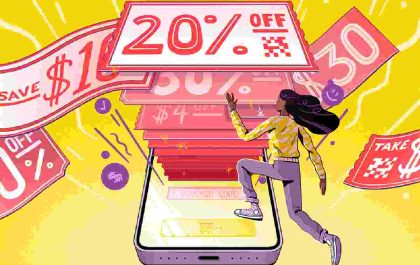Table of Contents
Introduction
History of Spotify – Spotify, that streaming music application that cannot be missing from any smartphone worth its salt, is already a classic in the digital sector. With more than 232 million monthly active users, a presence in 65 countries, and more than 100 million paying users (in August 2019). This giant took the step of going public in 2018.
Intending to improve its competitiveness against companies like Apple and its iTunes service, Pandora or Amazon Music itself But where does the popular green application come from? This post will tell you a little more about the history of this streaming music giant today.
Also read:The Best Apps and Games of 2018 Chosen by The Free Android
How Spotify was Born
Spotify is of Swedish origin and was born from the union of the two passions of its creator, Daniel Ek: computers and music. Daniel remain so intelligent that he founded his first company when he remain only 14 years old: he bequeathed to hire his fellow institutes to work on creating and designing websites.
At the age of 16, Ek tried to work for Google but remain rejected because he did not have a degree; he founded Advertigo, a successful online marketing company in which he developed a successful career. So much so that at age 23, in 2006, he sold Advertigo to the international giant Tradedoubler. And that was a crucial step in the birth of his flagship project, as he convinced one of the founders of Tradedoubler, Martin Lorentzon, also Swedish, to make the necessary investment for Spotify to see the light.
A name that we have already become accustomed to reading and hearing, and which, curiously, was generated fortuitously in an exchange of words between Lorentzon and Ek while they were looking for the name of the new creation. One of them understood Spotify, they liked it, and since it was not registered, they recorded it.
Thus, once the name was chosen, the engineers began to develop the application, first only for computers, and the Spotify music streaming model was born. As a curiosity, among the developers, remain, for example, the creator of uTorrent, integrated shortly after into BitTorrent.
History of Spotify: Birth
Of course, even though Lorentzon and Ek created Spotify in 2006, negotiations with record companies to obtain song licenses delayed their public launch for more than two years.
At its launch on October 7, 2008, Spotify remain conceived as an application to listen to music online on a computer. It was only available, in principle, for some European countries such as Sweden, Finland, Norway, France, the United Kingdom and Spain. Users could access millions of songs without having to download anything.
Of course, if you wanted to access the application for free, you had to remain invited. Otherwise, you had to hire a paid subscription. With the appearance of the iPhone and Android smartphones, Spotify understood that if they wanted to remain someone, they had to remain on the users’ terminals, so in 2009 they created the mobile app so that users could take their music with them on their smartphone. They also made the Premium model, which they have maintained until now, along with the free and the Unlimited.
History of Spotify: Arrival in the United States
Despite all the problems that American record companies put up to enter Spotify for the rights of the songs, in the end, most understood that they had to remain there, and in 2011 the company landed in the United States, competing closely with iTunes, to whom it moment he is winning the battle of active users.
History of Spotify: Platform Conversion
Shortly after landing in the United States, the creator of Spotify announced in November 2011 the conversion of Spotify into a platform that could host third-party applications, Spotify Platform. As Daniel Ek explained, the music went beyond music. Thus magazines such as Rolling Stone, with their channel or applications to view songs such as TuneWiki, remain integrated into the platform. The idea was to take the user to explore the music inside and out, and that Spotify was not just a song player.
Likewise, Spotify introduces the possibility that users can see what their contacts are listening to and even share what they are listening to with them.
Spotify Free Removes the Limit on Listening Hours
Although I have not mentioned it yet. Spotify users will remember that “tedious” limitation of 20 hours of music per month that it imposed in its free version. Yes, it was a … setback for those who did not want to go to Premium. Although the objective of Spotify with this measure was precisely that.
However, in 2014 the big news arrived, and the streaming music giant announced the definitive elimination of the 20-hour limit… but free? Well, just in exchange for sporadic publicity that you can’t skip, between some of the songs.
In 2014, Spotify added a part of merchandising of its artists on its platform by partnering with Topspin. A year later, it was still betting on the user experience by joining Starbucks to “put music to the cafes.
The Most Social Part of Spotify
Over the years, the platform has had to adapt to the impulse of social networks. In 2016 Spotify partnered with Facebook so that its users could share music through Messenger. Shortly after, the streaming music platform reached an agreement with Twitter so that Spotify songs can listened to without leaving the social network.
Parallel to all this, in the history of Spotify. There has also been a place to bet on photography. when buying the CrowdAlbum platform to share photos. And videos of their favourite artists’ performances and also opted for the launch of series of their production.
Likewise, Spotify confirmed in 2016 the success of its “Discover Weekly” list. Which is based on weekly discoveries adapted to each type of user and generated according to their musical tastes. Personalization to power. Since then, spotify has not stopped growing and releasing news, denying every day the voices that advocate its fall. Facing new rivals like Tidal and calling into question those who directly question its business model.
Spotify Follows the Great Technological Trends and the Vanguard in Content
One of the latest bets of Spotify: this streaming giant continues to bet on its podcast division. And to promote it .It acquired two companies dedicated to this sector:
- One of the largest podcast producers internationally, Gimlet Media.for an agreement that exceeded 200 million dollars (around 170 million euros).
- Anchor, a company that provides its podcast creators with tools to build, disseminate and monetize their programs.
This strategy, beyond meeting the remarkable growth of podcasts in the taste of user. Will also allow you to develop a new channel for the consumption of your primary business.
Besides, Spotify has not wanted to be left behind in terms of technological advances. Searching and interacting with devices through voice is a trend that it has wanted to integrate into. And in May 2019, it announced the launch of its new ads enabled by voice commands.
Also read:Social Club App – Features, Instagram clone for pot, gets booted from the App Store
Related posts
Featured Posts
Unlocking Savings: Shopping with Coupons on Your Smartphone
Unlocking Savings: Shopping with Coupons on Your Smartphone – In today’s electronic age, mobile phones have actually ended up being…
Building Customer Relationships through Your Outbound Call Center
The call center is an integral part of every business organization, often serving as the first point of contact between…

![History of Spotify: Evolution of Streaming Music [2023]](https://www.webtechradar.com/wp-content/uploads/2021/04/History-of-Spotify-1200x675.jpg)

